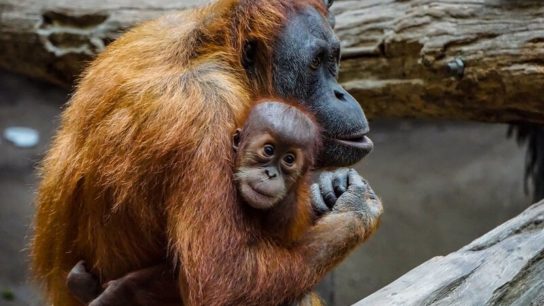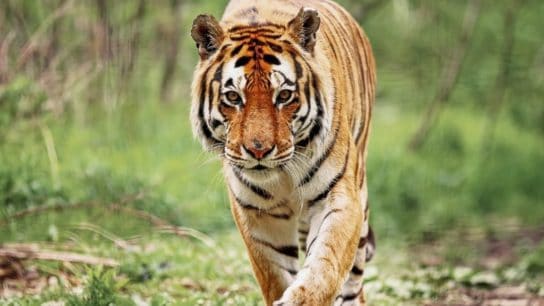Bats feed on the rice borer moth, a pest that poses a significant threat to rice crops worldwide. In Spain, Madagascar, and Mexico, they have proven vital for the protection of rice crops.
—
According to statistics from the Food and Agriculture Organization, global rice production increased steadily from 200 million tonnes (mt) in the early 1960s to 700mt in half a century, driven largely by population growth. This rise in production heightened the need for more effective and economical methods of insect pest control – such as using bats – instead of relying solely on insecticides. Insectivorous bats can consume some 80-100% of their body weight in insects each night, making them valuable allies in agriculture.
In 1990, in the Ebro Delta Natural Park on Buda Island, northeast of the Iberian Peninsula, pesticides were generally spread from aircrafts. Farmers, aware of the need for an alternative solution, installed bat boxes across rice plantations in a bid to fight the rice borer moth, a serious pest of rice. They were soon occupied by thousands of bats across several hectares of rice fields and, in a short time, pest levels declined significantly.
Building on this natural pest control approach, a study published in 2015 provided scientific validation and evidence supporting the role of bats as effective, eco-friendly pest controllers. In the years to come, more studies followed. In 2024, researchers studied how the presence and absence of bats affected rice pests. They concluded that on plantations where barriers were set up to prevent bats from accessing them, pest presence was twice as high.
Nowadays, however, pheromones are mostly used to control these pests, and if they are not enough, pesticides are also applied. Pheromones are substances that disrupt mating by confusing male insects, masking the scent trails of females, or creating false trails into the field.
The Importance of Preserving Bats
“The presence of bats in agricultural lands significantly contributes to the protection of the yield of rice fields, minimizing the harvest losses due to insect pests,” explained Adrià López-Baucells, a researcher from the BiBio Research Group at the Natural Sciences Museum of Granollers in Spain. “The economic value of this natural pest control is estimated at savings of €56 [US$65] per hectare in rice fields,” the researcher explained, making bats a sustainable, economical, and environmentally safe method to fight insect pests in agriculture.
In the 2015 study mentioned above, researchers and park technicians also evaluated the types of boxes most suitable for bat survival. In the past, during episodes of extreme heat, some bats died from the excessive temperatures inside conventional boxes. An innovative model of box was therefore developed by Xavier Porres, a technician and project collaborator from the Natural Park in Ebro Delta, made from a mix of rice husk, plant fibres, and other organic materials from rice production. These lightweight, waterproof, and light-colored boxes were designed to prevent overheating and were installed throughout the park. By using agricultural waste from the rice farms to create shelters for bats – which then helps control pests in the fields – this approach completes a sustainable cycle of reuse and natural pest management, ultimately boosting crop productivity.
Bat Projects Around the World
Following these findings, the Catalan public administration in Spain began funding collaborative projects and initiatives between the BiBio Research Group and the BETA Technological Centre. These projects use bats to improve biodiversity, and agricultural productivity. For example, in Catalonia, vineyards make up about half of the land used for organic farming, where synthetic chemicals aren’t allowed – so farmers rely only on prevention and natural methods to manage pests.
As part of these initiatives, researchers aim to study the bats’ diet, threats, migration, and behaviour. Smart and autonomous bat boxes have also been recently designed and equipped with infrared cameras, environmental sensors, and solar panels. These boxes take one photo per day and send it to a mobile phone, allowing for the constant monitoring of bat presence, detection of breeding, and continuous tracking.
The knowledge gained from the 2015 study was then applied to different contexts. In 2025, researchers from the same group identified a similar pattern with bats controlling multiple insect pests in Madagascar.
Madagascar is renowned for its rich biodiversity and high levels of endemism, but it currently faces significant threats from land conversion for agriculture due to the exponential population growth in the last half century. To plant crops such as rice, people are forced to clear land by deforesting large areas, resulting in significant forest and habitat loss. They use a practice known as “slash and burn”, which involves burning, clearing the remains, and planting the new crop. The forced transformation of landscapes on this African island has disrupted ecosystems, causing bats to relocate and increasingly coexist with humans.
Urgent conservation efforts, including community-led cave protection and sustainable land-use planning, are needed. Raising awareness among farmers about the value of bats can promote sustainable practices and strengthen food security.
Soon after, another study in Mexico drew a similar conclusion. In Morelos, researchers studied how well insect-eating bats help protect rice crops from pests. They found that bats reduced crop damage by 58%. Although the total rice harvest didn’t increase much, the reduced damage was worth about €3-7 (US$3.6-8) per hectare each year. This is the first time the economic value of bats for rice farming has been measured in the Americas, highlighting the importance of protecting bats as part of sustainable agriculture.
Bats as Bioindicators
Bats are very small mammals. Their wings make them appear larger, but sometimes weigh less than 5 grams. Despite their small size, they have remarkable longevity: many species live between 10 and 20 years in the wild, and some can reach 30 to 40 years. They also have a low reproductive rate: most species produce only one offspring per year. This combination of longevity and low birth rate means that damaged colonies can take decades to recover.
Bats are disappearing due to habitat loss transformed for intensive agriculture, pesticides, climate change, disease, and human disturbance. These factors reduce their food, shelter, and survival rates. As bioindicators, their decline signals worsening ecosystem health.
In Catalonia, for example, 30 species have been identified, with one already classified as extinct. Some are associated with riparian forests, and their presence indicates good environmental health. Others, which are forest dwellers, only breed in well-preserved woods, making them clear indicators of environmental quality.
Bats support sustainable agriculture by naturally reducing pests, which lessens pesticide use and helps protect food security and the environment. Preserving their habitats boosts rural productivity and biodiversity. Studies in the Ebro Delta, Madagascar and Mexico confirm their valuable role in farming systems, especially amid global challenges like climate change and ecosystem stress.
Featured image: Oriol Massana and Adrià López Baucells.
This story is funded by readers like you
Our non-profit newsroom provides climate coverage free of charge and advertising. Your one-off or monthly donations play a crucial role in supporting our operations, expanding our reach, and maintaining our editorial independence.
About EO | Mission Statement | Impact & Reach | Write for us








